Comprehensive Review of Electronic Health Record Systems (EHR)
VerifiedAdded on 2023/04/06
|15
|835
|187
Report
AI Summary
This report provides a comprehensive overview of Electronic Health Record (EHR) systems, detailing their definition, importance, components, and concept. It explores the ten dimensions of EHR, including information capture, representation, and confidentiality, along with the steps required for effective implementation. The report highlights the advantages of EHR, such as improved quality of care and reduced medication errors, as well as disadvantages like physician burnout and high treatment costs. It also examines the EHR system in Saudi Arabia, noting the government's endorsement through Vision 2030 and the challenges of knowledge and English proficiency. The report concludes by outlining the role of EHR in signifying patient health history, facilitating communication among healthcare providers, and maintaining the quality of health services, supported by relevant references.
1 out of 15
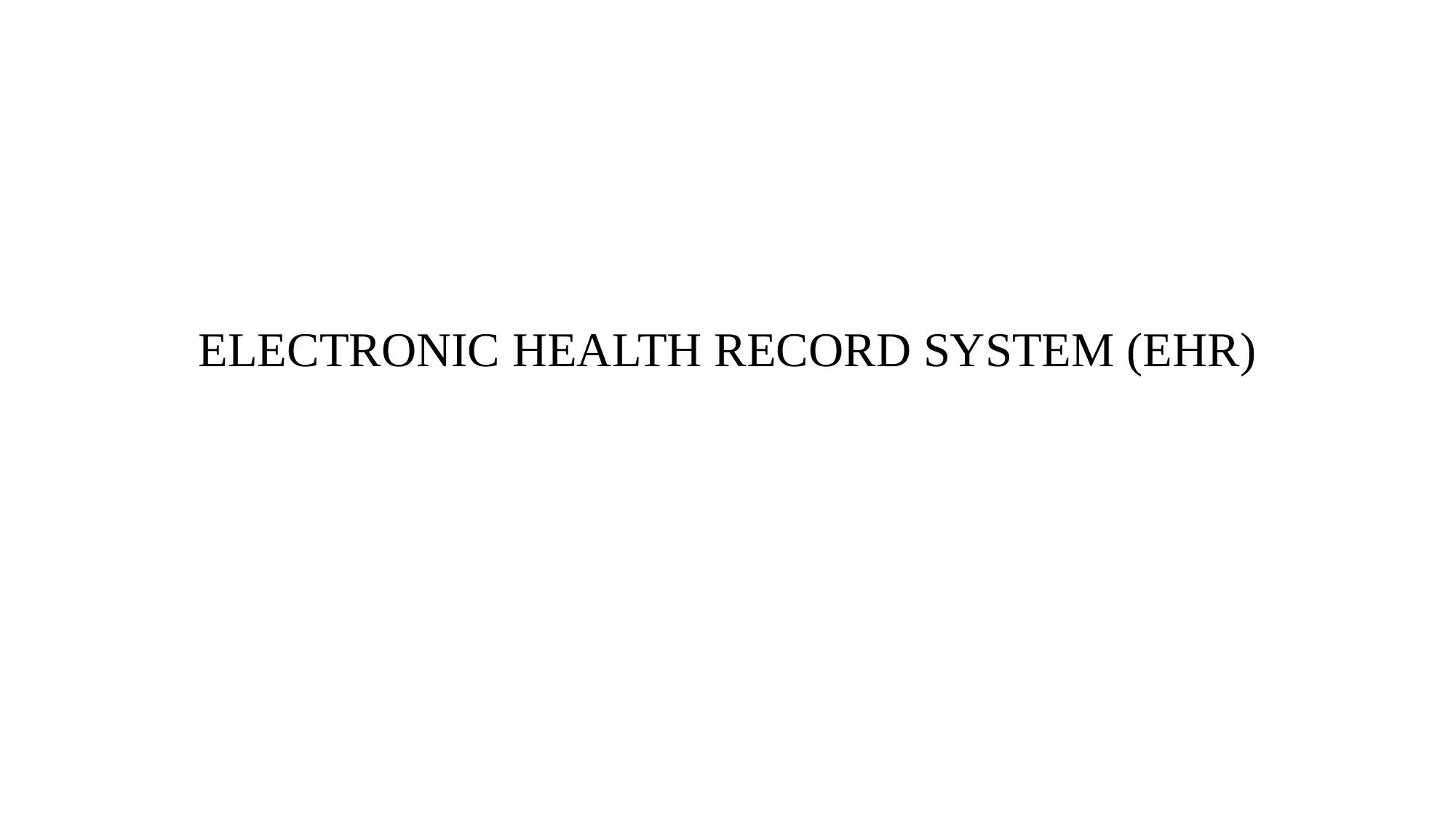
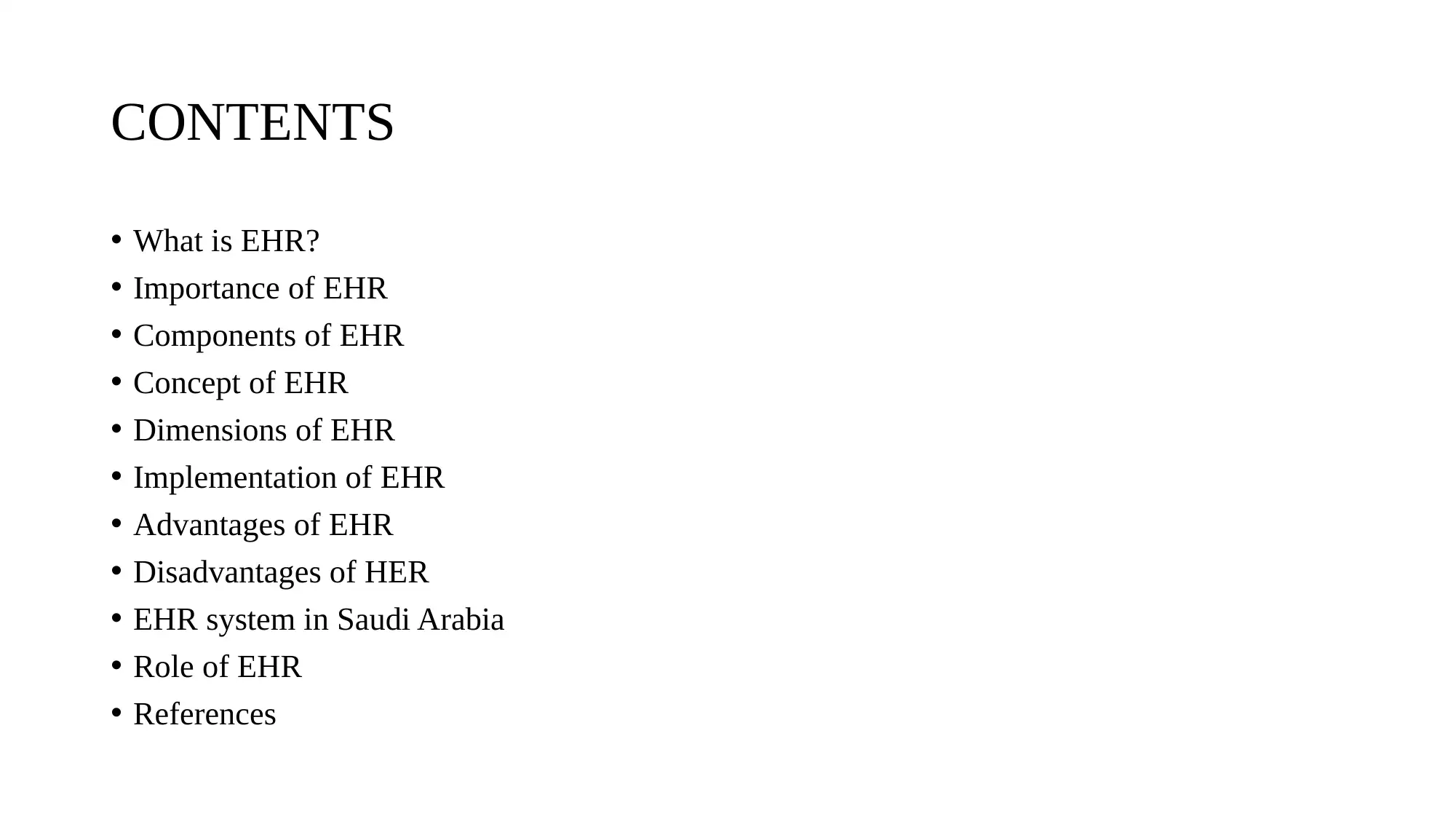
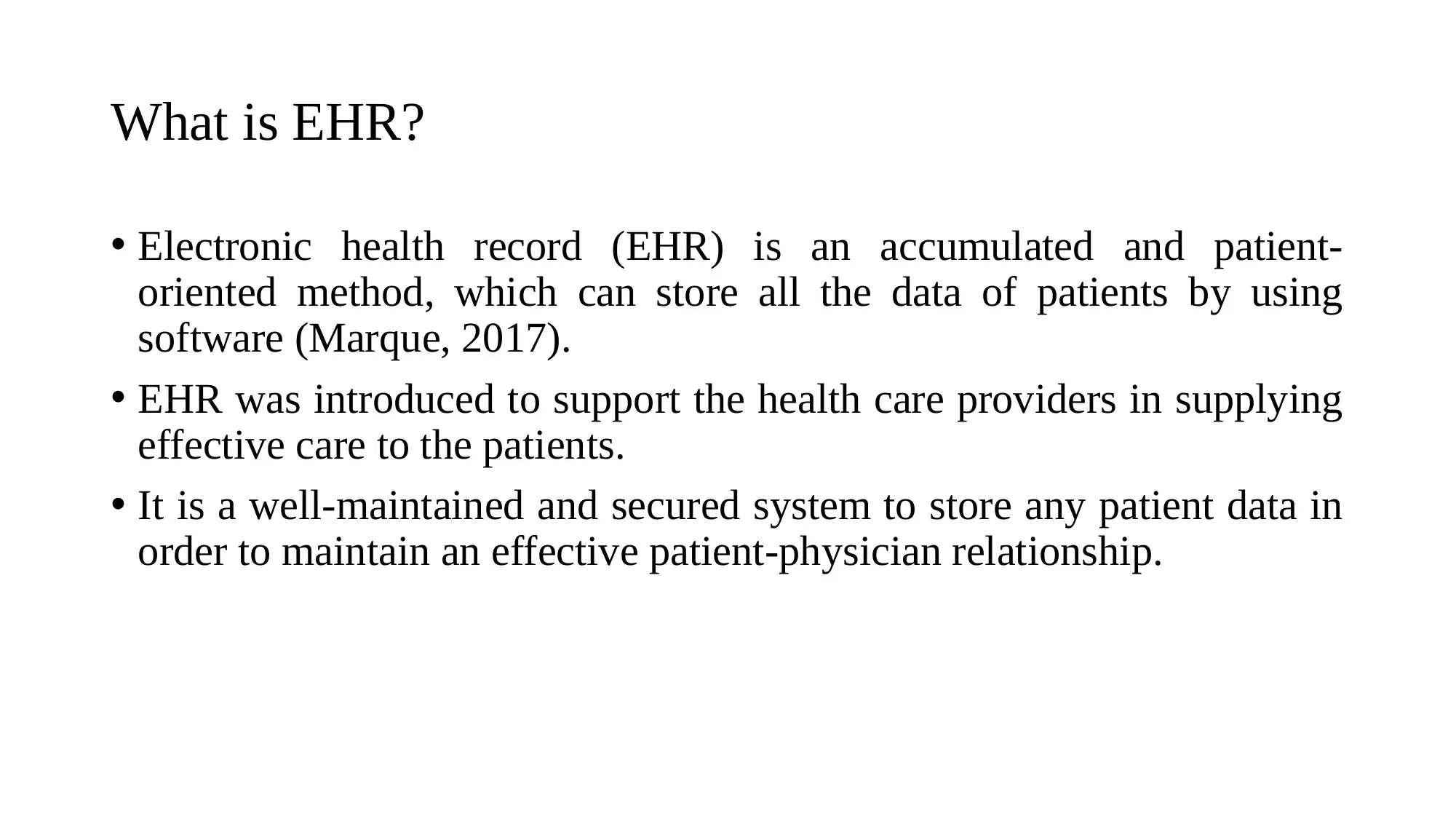

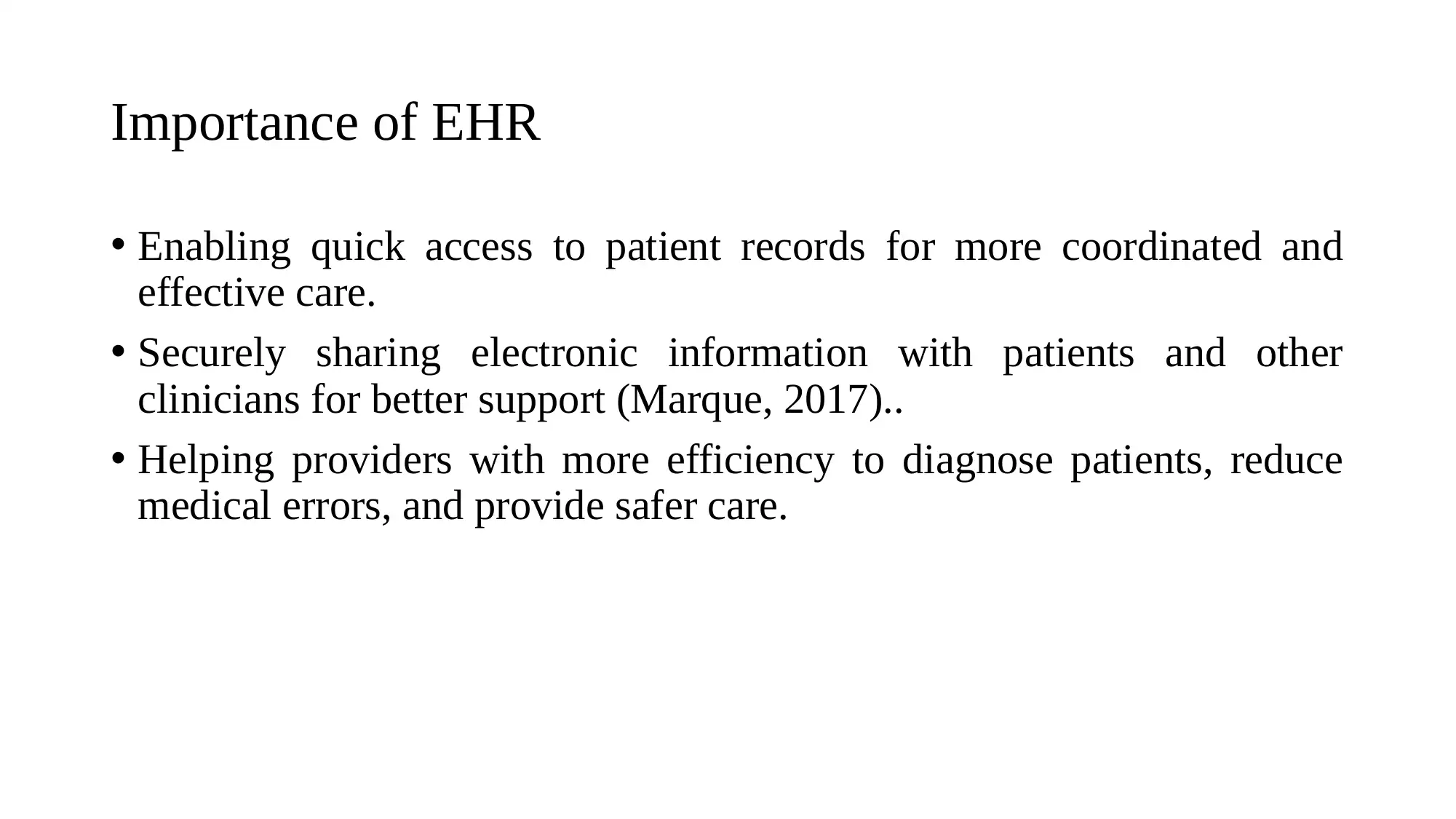
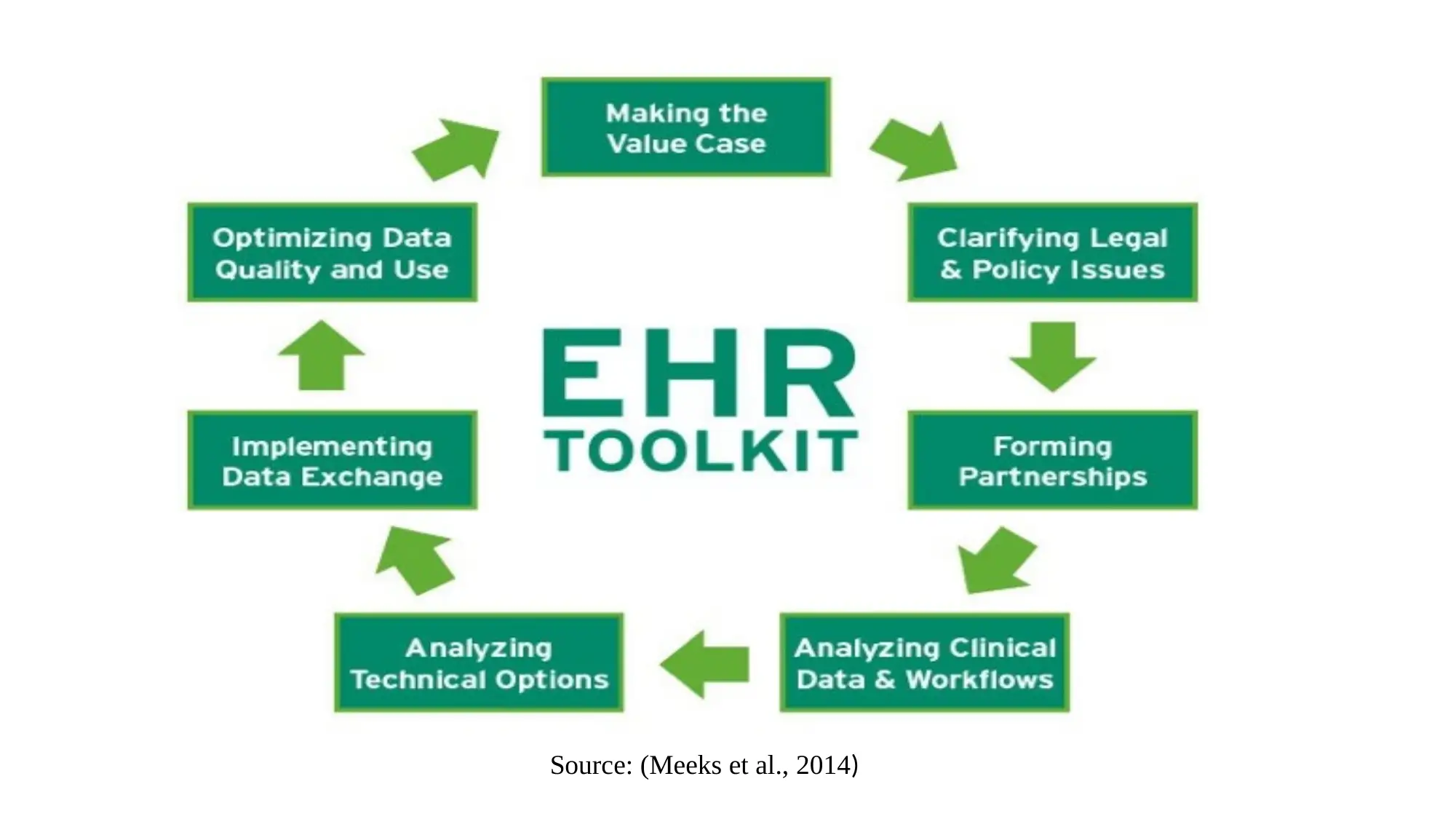

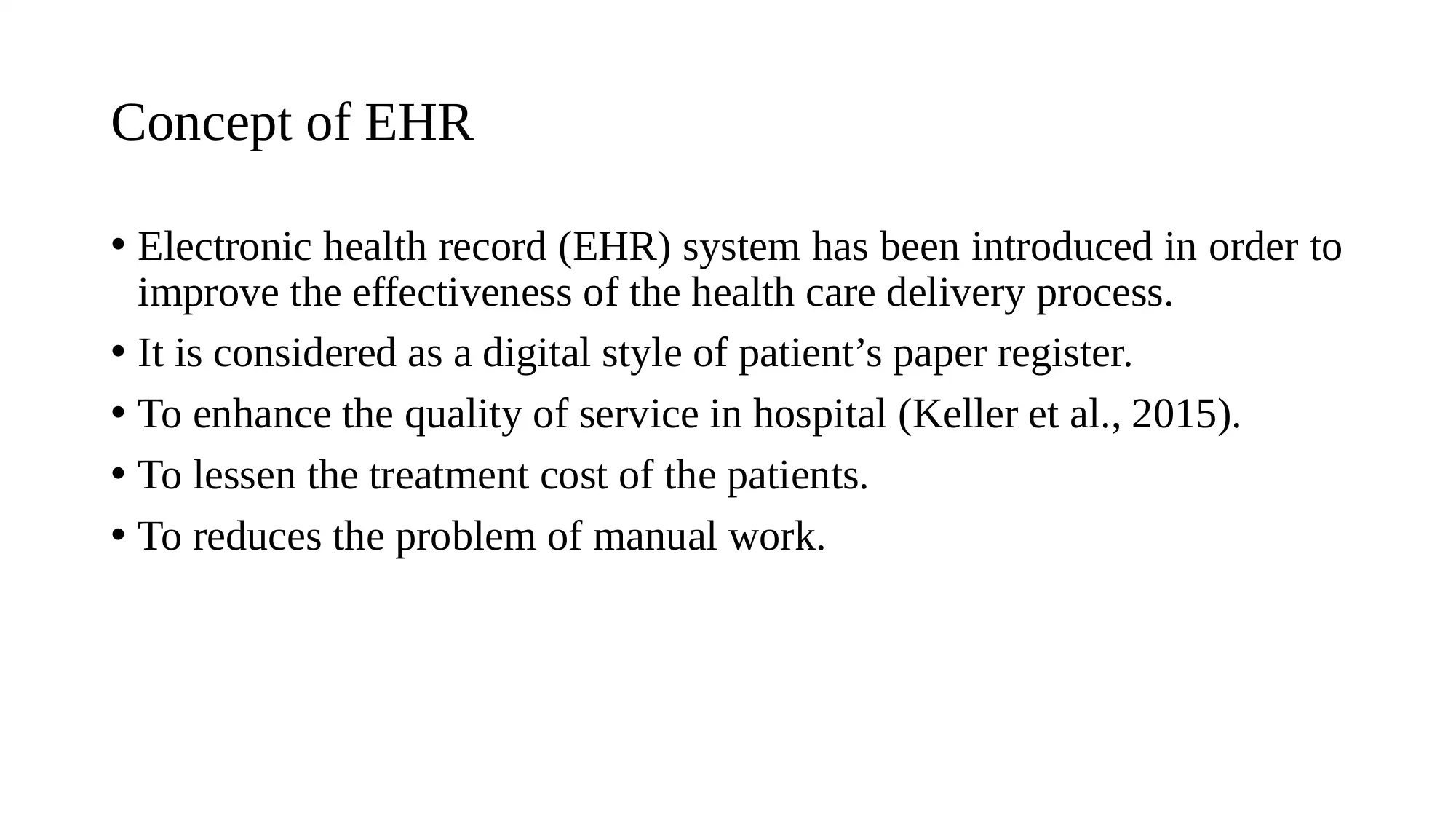

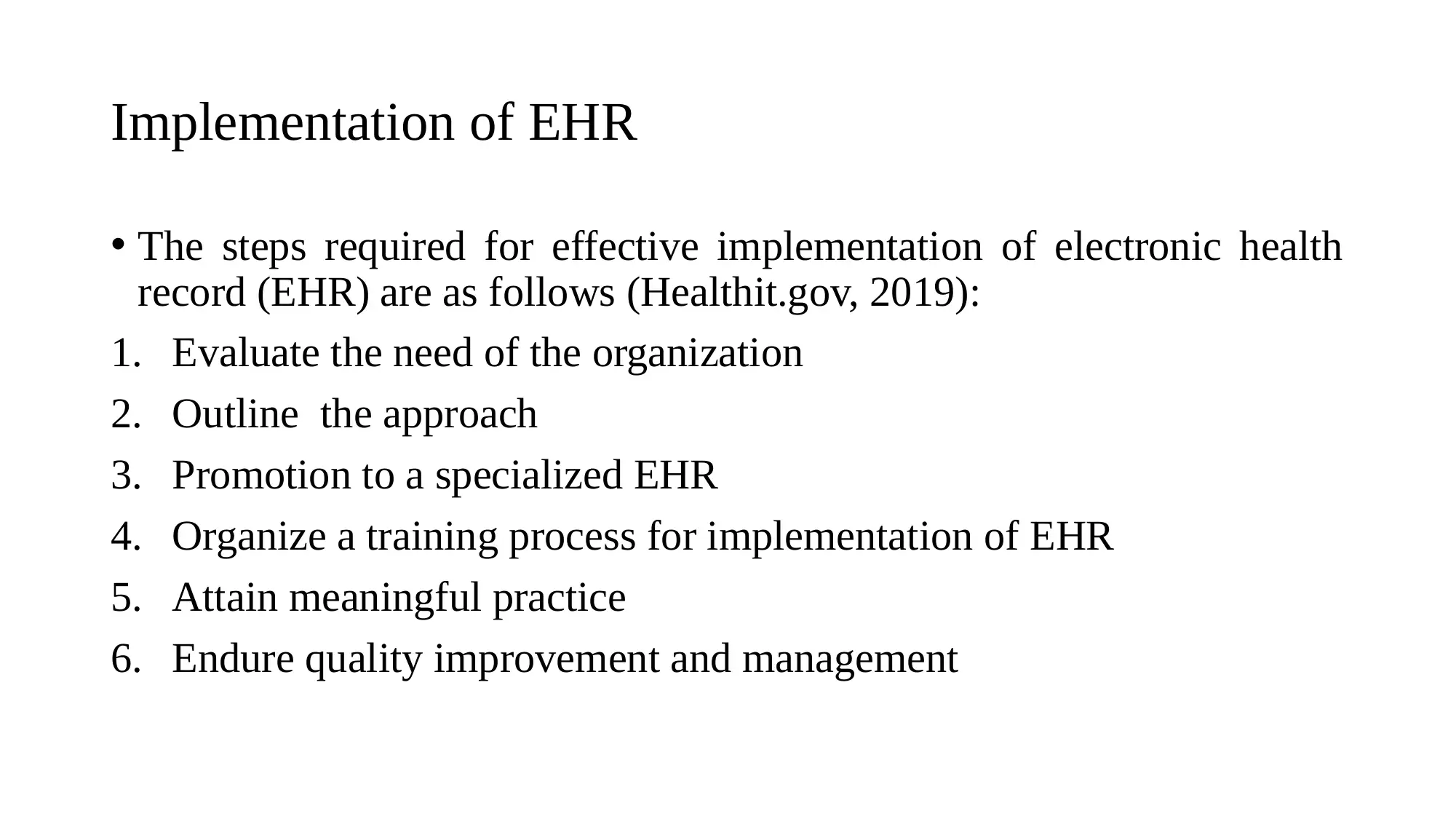
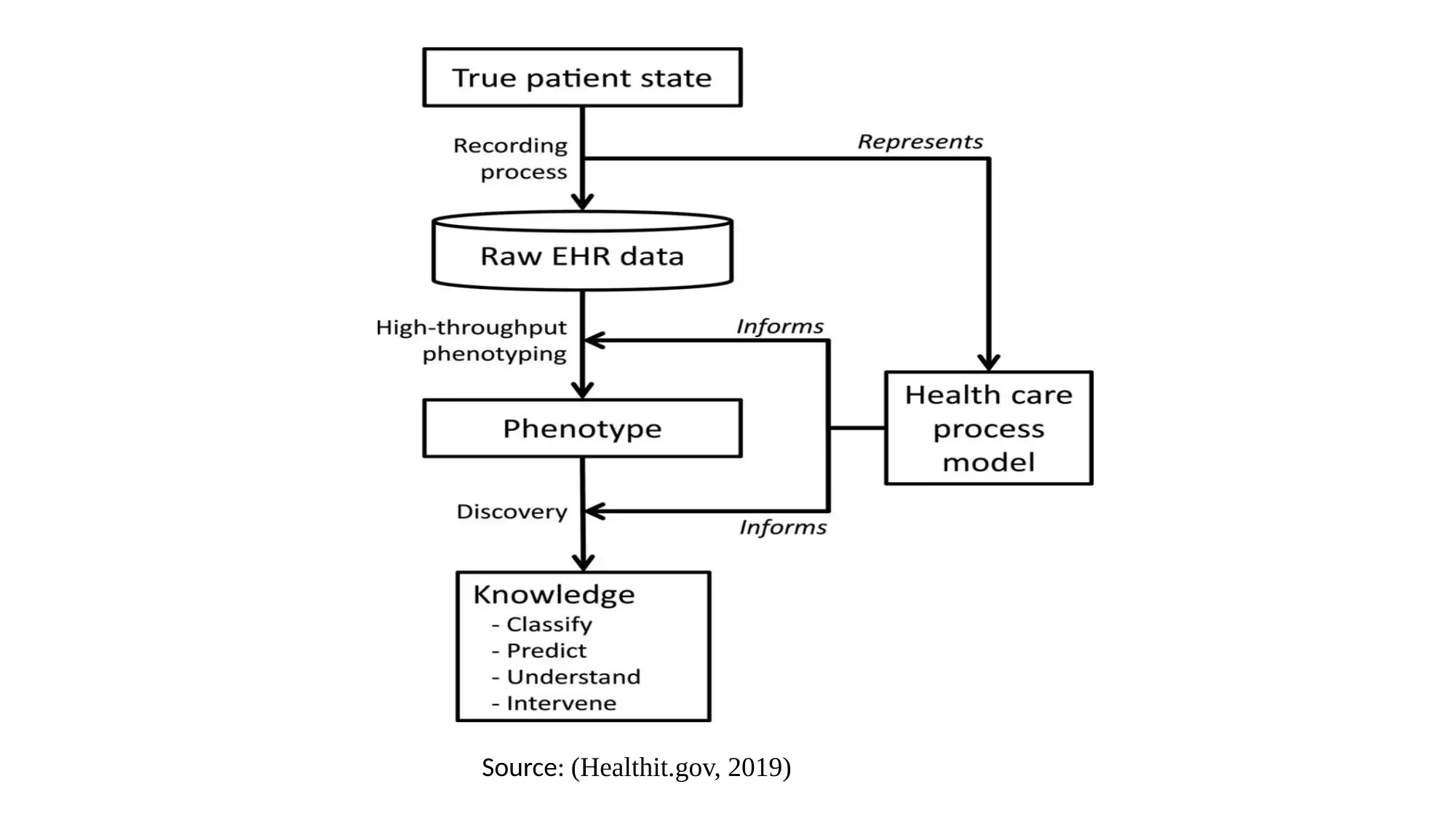

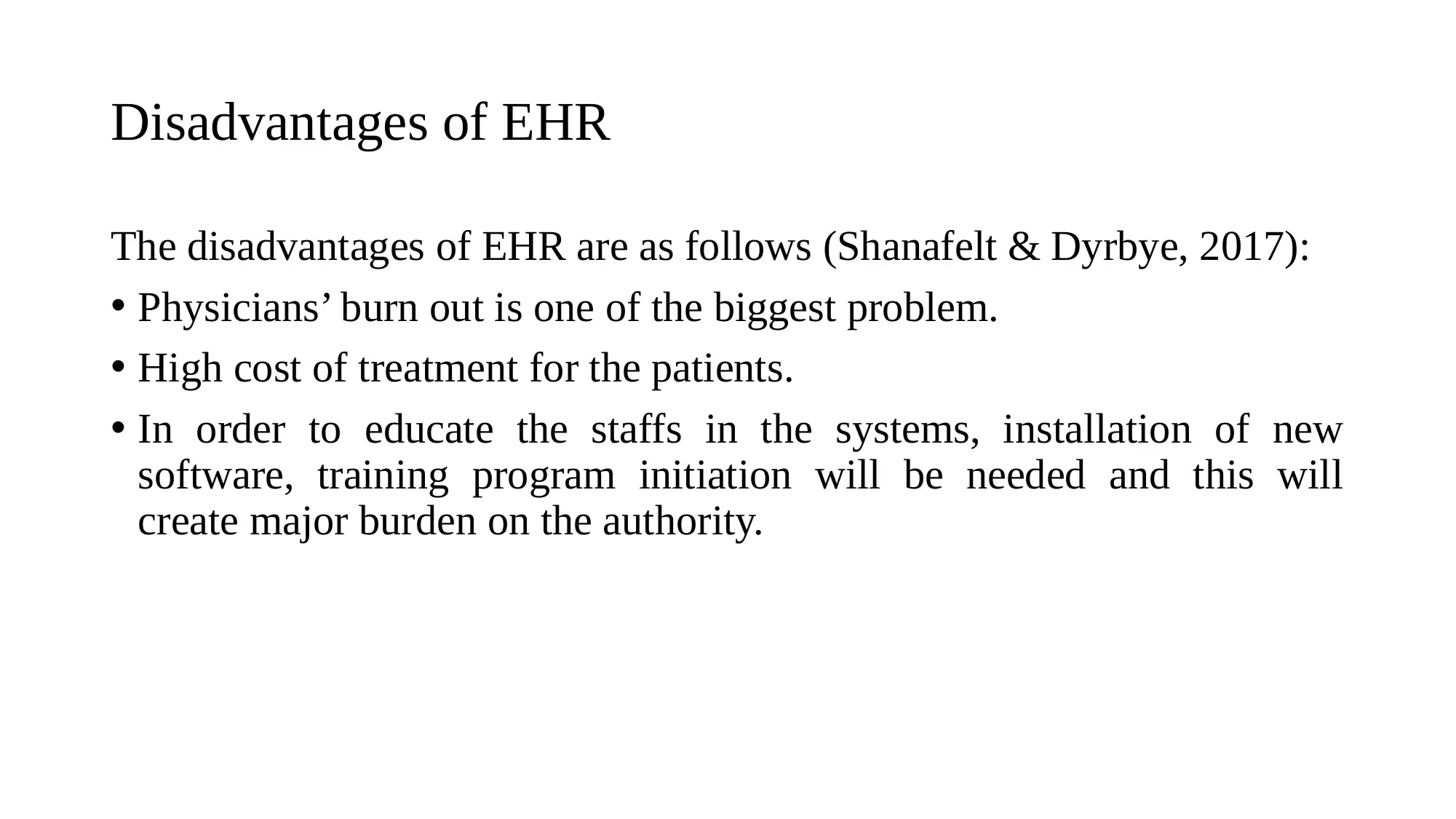





![[object Object]](/_next/static/media/star-bottom.7253800d.svg)